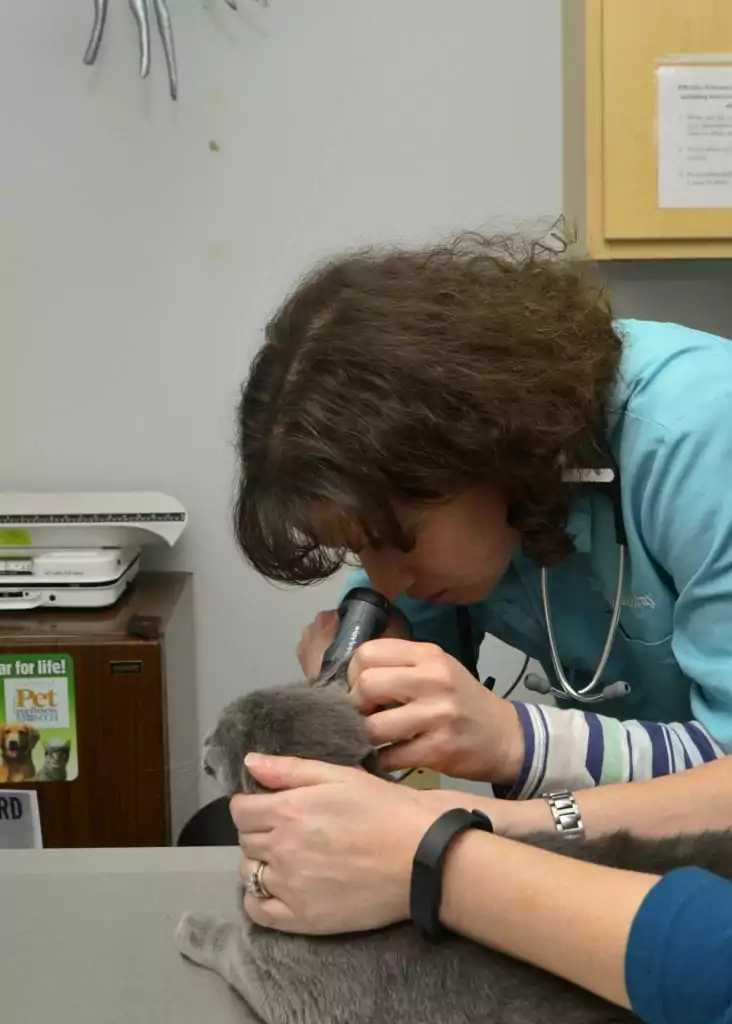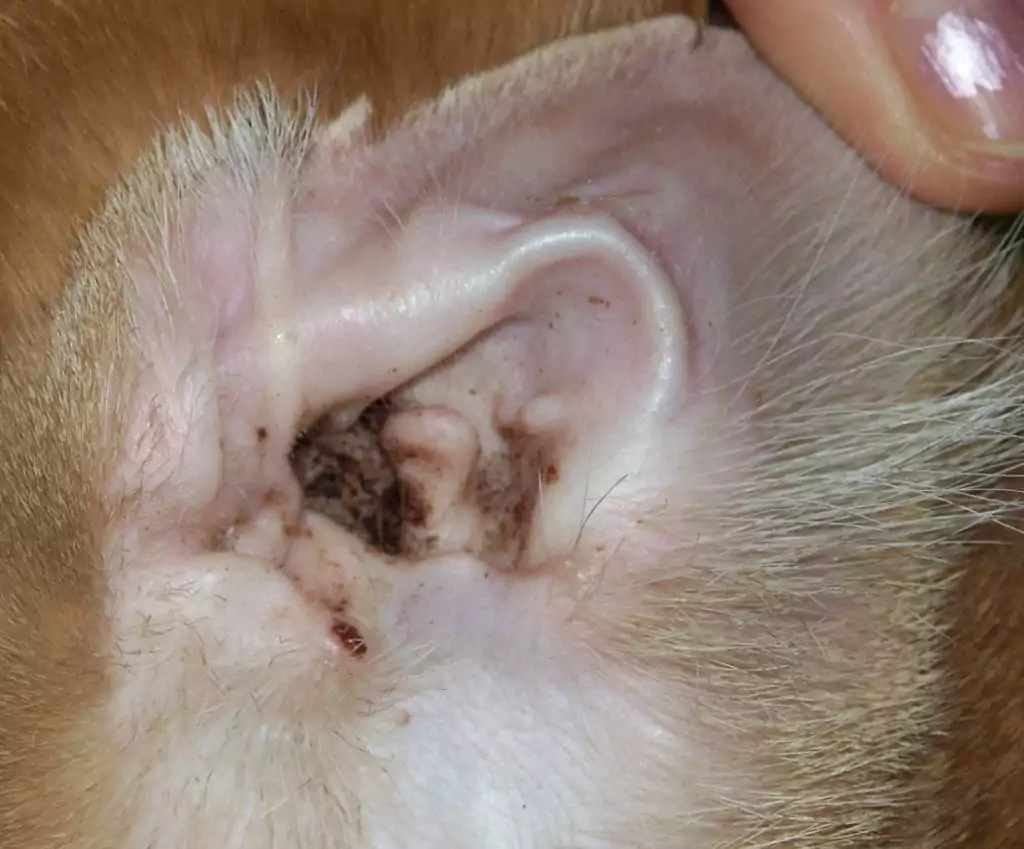Fido keeps scratching and whining in pain? His ears smell funny? Does your cat lose balance climbing down the tree? Maybe it’s ear mites – Otodectes cynotis! Maybe it’s time to visit the vet and check them ears out.

Ear mites are tiny little microscopic parasites living their life cycle in the inner ear canal and feeding on dead skin cells. The most common type of ear mites is Otodectes cyanotis.
They usually inhabit dogs, cats, rabbits, and ferrets. They are highly contagious and can get transferred from one animal to another with direct contact.
The presence of ear mites in the ear canal can lead to serious inflammation and/or secondary bacterial infections.
The life cycle of the pesky ear mite is about 3 weeks in which they grow from eggs to their adult form ready for reproducing, going through a total of 5 stages. An adult lifespan of the ear mite is about 2 months in which a female can start laying eggs after 3 weeks and will continue to lay throughout her life. Once an egg is laid, it hatches in 3-4 days. Тhe egg then undergoes several larval stages, with resting periods of development between the different stages when the ear mite pupates. Finally, an adult emerges.
Usually, ear mites are not contagious to people. There are rare cases where they infest an arm or leg but never travel to the ears. When bitten by an ear mite, a person may develop a skin rash.
Symptoms of Otodectes Cynotis
- Excessive ear scratching
- Head shaking
- Loss of balance
- Fur loss or dermatitis resulting from self-trauma (scratching or excessive grooming)
- Black or brown ear secretions
- Foul smell
- Inflammation of the ear
- Obstruction of the ear canal with debris that is tar-like
- Scratch marks around the ear
Diagnosis of Otodectes Cynotis

Typical symptoms along with a history of contact with other cats or dogs with similar symptoms would suggest the involvement of ear mites. Other ear diseases and conditions must be ruled out first before deciding the diagnosis. Usually, the veterinarian will perform a physical examination of the dog or cat and check the ears with an otoscope.
Most of the time, the little parasites are visible as little white dots running from the light. Second, the veterinarian will take a sample of the ear secretions and check them under the microscope. If the ears are very sore, the pet may need to be sedated to allow the ears to be properly examined. After visually locating the parasite, the veterinarian will determine the diagnosis.
Treating Ear Mites
Treatment of ear mites is a long process and requires dedication and continuity. Usually, the treatment is divided into 3 steps:
- Treatment of the infected ears
- Treatment of the surrounding skin
- Treatment of the living area and bedding
Cleaning of the pet’s ear can be difficult. If the pet is resisting, it’s better if it is done by the veterinarian instead of home. This can be done with a specialized cleaning solution or other substances suggested by your vet. In case of dry scabs inside the ear use of mineral oil to soften is recommended. After a thorough cleaning, an insecticide is often used.
There are lots of commercial products available, consult a vet about the best for the specific patient. In some cases, injections of ivermectin are used. In the case of secondary bacterial infections, an antibiotic will be added to the list of medications.
Treatment for ear mites should last at least 3 weeks to get all mites.
Treatment of the surrounding skin should be consisted of cleaning the debris and application of a topical ointment with anti-inflammatory properties.
The living area and bedding should be thoroughly cleaned and sanitized.

The best prevention of ear mites is regular use of ear mite repellence products and avoiding contact with infested animals. Regular cleaning of your pet’s ears is the easiest way to spot the infestation in its beginning.
Veterinary professionals encounter this condition more often than you think. Ear mites are very common, especially in cats living outdoors and animals that come in contact with them.
In summary, Otodectes cynotis is the most common type of parasite that infests the ear canal in animals. They are mostly seen in cats and dogs, but also in rabbits and ferrets. Ear mites are easy to diagnose because the symptoms are easy to spot. Treatment is a little tricky and requires dedication and attention.
If you like this article, read more on our blog!
